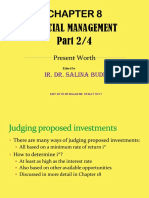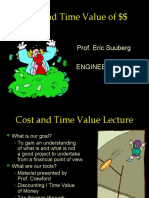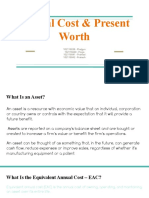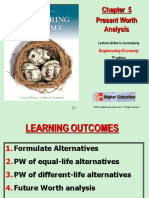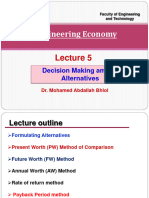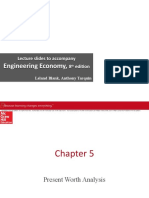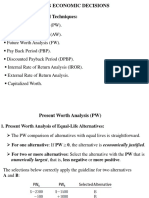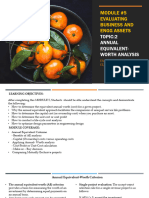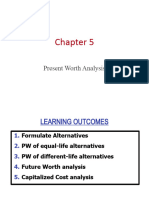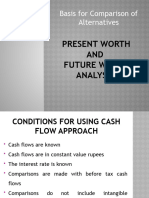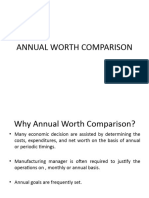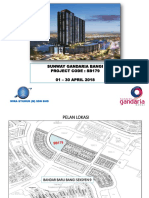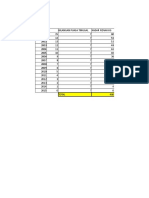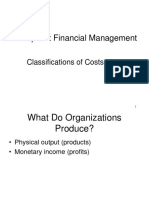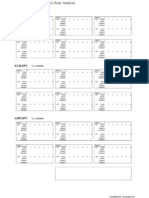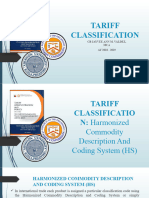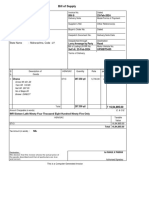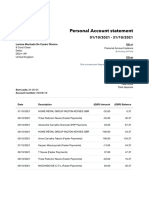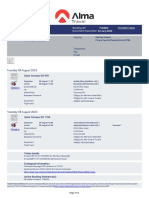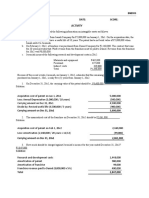0% found this document useful (0 votes)
60 views21 pagesTopic 1: Financial Management: Present Worth Comparison
This document discusses different methods for judging proposed investments based on their present worth. It covers calculating the present worth of investments with different lives, including perpetual lives. The key methods are:
1) Converting investments to their least common multiple lifetime to compare on present worth
2) Modeling some investments as perpetual to avoid analyzing numerous copies
3) Annualizing periodic costs to calculate their present worth for perpetual comparisons
Examples are provided to illustrate comparing investments with different costs, lives, and salvage values using present worth analysis.
Uploaded by
Mohd Jamal Mohd MoktarCopyright
© © All Rights Reserved
We take content rights seriously. If you suspect this is your content, claim it here.
Available Formats
Download as PDF, TXT or read online on Scribd
0% found this document useful (0 votes)
60 views21 pagesTopic 1: Financial Management: Present Worth Comparison
This document discusses different methods for judging proposed investments based on their present worth. It covers calculating the present worth of investments with different lives, including perpetual lives. The key methods are:
1) Converting investments to their least common multiple lifetime to compare on present worth
2) Modeling some investments as perpetual to avoid analyzing numerous copies
3) Annualizing periodic costs to calculate their present worth for perpetual comparisons
Examples are provided to illustrate comparing investments with different costs, lives, and salvage values using present worth analysis.
Uploaded by
Mohd Jamal Mohd MoktarCopyright
© © All Rights Reserved
We take content rights seriously. If you suspect this is your content, claim it here.
Available Formats
Download as PDF, TXT or read online on Scribd
/ 21

